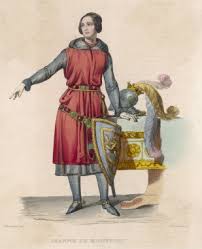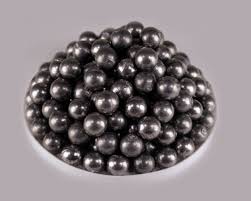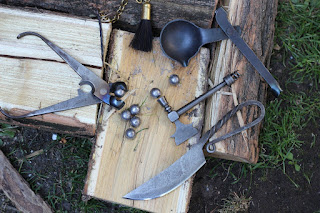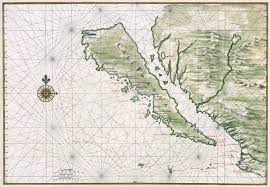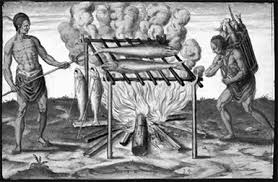I’m talking here about the 1976 movie starring Robert Shaw.
At the time, the film was a considered a flop, but it has survived, mostly I
think because it’s a pirate movie, and they just seem to stick around.
Pirate movies had fallen out of favor after the 1950’s. In
an era before computer effects, they were horribly expensive to make, and when
the 1960’s brought around drug culture, the Vietnam war, protests of the
Vietnam war, and fear of nuclear war with Russia, the adventures of a bunch of
sea-thieves seemed to lose their charms.
But in 1973 a version of The
Three Musketeers did extremely well, and when Jaws became the first real summer blockbuster in 1975, studio
executives were willing to risk the investment in a pirate movie.
The cast list is fascinating. Robert Shaw had played Quint
in the aforementioned Jaws, and had
also been a Bond villain. In Swashbuckler,
he plays the main pirate, Captain “Red” Ned Lynch. A very young James Earl
Jones (the voice of Darth Vader) plays his friend Nick. Peter Boyle, most
famous as the Monster in Young Frankenstein,
is the Evil Lord Durant. And Geneviève Bujold plays the young English
noblewoman, Jane Barnet.
 |
| Requisite underwear shot |
Other notable actors are Geoffrey Holder – famous for his
fruity laugh, as Cudjo Quadrill, a former slave and knife artist, and Angelica
Huston as “The Woman of Dark Visage.” Award winning character actor Beau
Bridges (brother to Jeff Bridges) plays the often ridiculous Major Folly.
In this movie the pirates are definitely the Good Guys. Lest
there be any confusion, the opening monologue refers to Lord Durant’s cruelty,
and to the innocent prisoners wasting away in his dungeons. Throughout the
film, Lord Durant kills people for fun. He arrests the current Lord Justice for
no noticeable reason, and throws that worthy man’s wife and beautiful. feisty
daughter into Jamaica’s slums.
But it’s his private life that creeps us out. Many of Durant’s
scenes take place in his bathroom/lounge, a place inhabited by numerous
scantily clad young women, strapping, shirtless black men, and Angelica Huston,
who lurks like a vulture. But worst of all is a creepy blond boy, listed in the
credits as “the lute player.” At Durant’s command, and with evident erotic
glee, this person dons long steel fingernails and uses them for suggestive torture.
It’s weird as hell, and it didn’t look especially convincing, even in in 1976.
 |
| Less creepy as a monster |
The producers weren’t making any effort at historical
accuracy, but they landed on it by accident a couple of times. The mix of races
on the pirate ship, the easy authority of James Earl Jones, the pirate’s second
in command, all ring true. In addition, the townspeople, also people of many
races, show their support of the pirates in various ways. This stands to
reason, as the pirates in this movie do what pirates have always done – they capture
money, and then spend it on women and liquor. Thus, the local economy is
improved.
And the film is not shy with the women. James Earl Jones
likes to have a blond girl on one knee, and an African girl on the other, and
there is no doubt that he takes them both to bed. Several pirates are shown in
bed with their doxies, and the women enjoy showing off pirate-supplied jewelry.
After an adventure, the pirate ship is filled with women, and Robert Shaw tells
his crew to “sleep well, lads,” as he heads into his cabin with a willing
wench.
The show also is one of the only pirate movies to film with
a real (replica) pirate ship. Lynch’s vessel, the Blarney Cock, is actually an exact replica of Sir Francis Drake’s Golden Hind. The actual Golden Hind floated in 1577, and would
have been sadly outdated during the year of the movie, 1718. But it’s wonderful
to see a replica of real vessel that was owned by real pirate.
She’s very small, though she carries cannons (which also
seem small, though they would be accurate for Drake’s time.) Too many pirate
movies put the pirates on vast ships where the captain eats at a table 17 feet
long. There are places where the Golden
Hind’s whole width is less than 17 feet. She’s crewed by an appropriate
number of pirates, and they actually do things like sing real shanties, and
make real repairs. In one scene, the pirates are using a period-accurate paint
brush to paint the deck red. (This was said to make the crew braver, because if
someone was wounded the red blood would not be so noticeable.)
 |
| 102 feet long, 20 feet wide. Not big |
Cudjo is the leader of a highly unlikely troop of circus performers,
and flashes a lot of 20th century leather armor and knives. He is an
example of several people who are in the cast mostly because they were famous
at the time. Can’t fault the actor, though. He’s exotic and that was his main
job here.
The plot is entirely predictable. All the people hate Lod
Durant and love the pirates, who steal from the nobles and then spend it as if
gold was water. Then the pirate captain meets the Lord Justice’s beautiful, feisty
daughter, and falls in love with her because, um – she’s beautiful and feisty. The
pirates and the town people rise up to stop the Evil Lord Durant from making
off with a large amount of ill-gotten wealth. Durant dies, justice triumphs.
The creepy kid with the fingernails impales himself while falling down a flight
of stairs, and Anjelica Huston steals Durant’s dead body for reasons we
probably don’t want to think about.
There are several mildly interesting chase scenes, all
technically believable, and a couple of rousing fights. All of this is damaged
by a lack of good music. Someone went cheap on the music for this film, and the
soundtrack only offers one “adventure theme” that plays over and over and over.
By mid-movie it’s annoying. It also makes no use of any of the music existent
at the time, or of sea songs. What a waste.
Swashbuckler is
worth a look, though it only gets 3 stars. It has some fine bits of dialogue, a
great location, and raunchy poetry. Shaw shines as a pirate, and seeing James
Earl Jones as a young man is a beautiful thing. The chemistry between the two
of them really works. “Nobody’s ever dared stand up to us more than once,” says
Shaw, and you believe him. So grab some
popcorn and enjoy a good, silly pirate flick in Swashbucker.







